1 Dec 2017
Venos & Veglio Reveals on Oxford Street
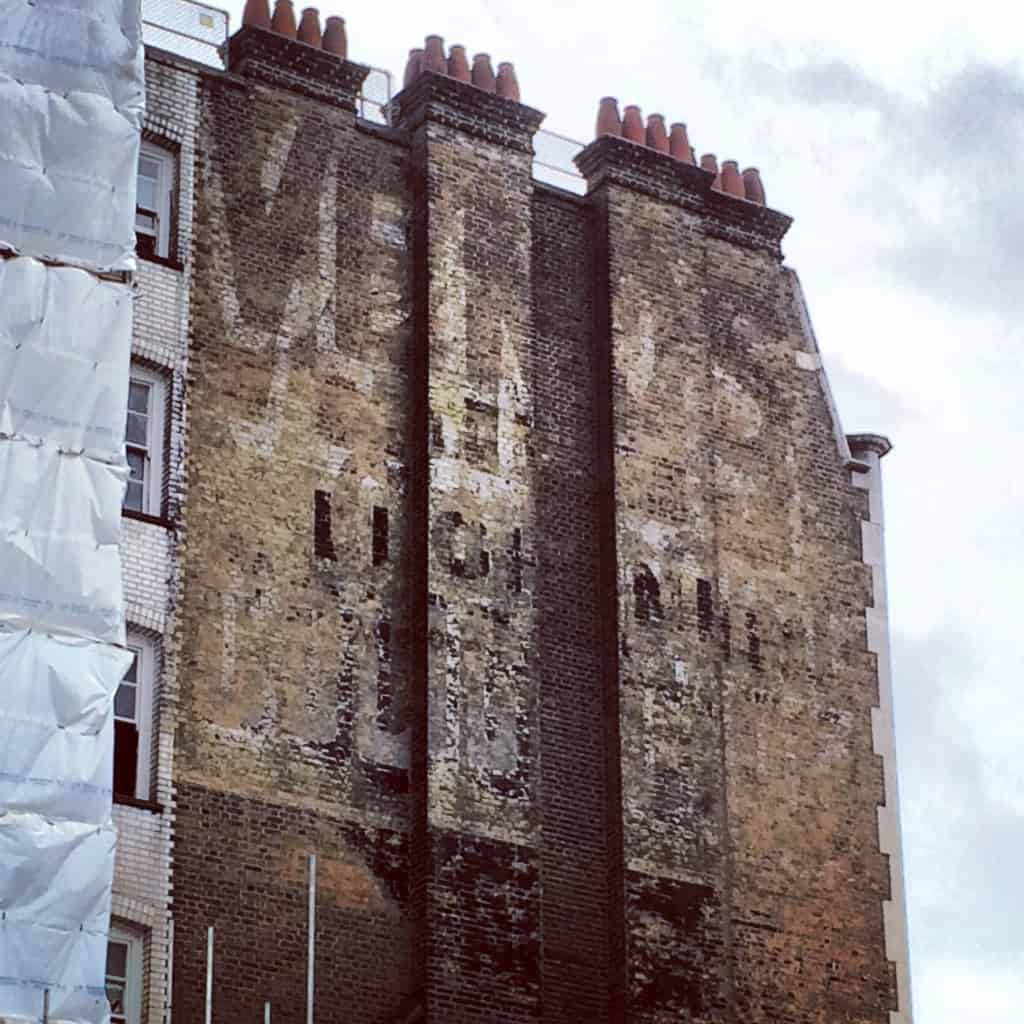
The above ghost sign was revealed a couple of years ago by the redevelopment of a site on the North side of the Eastern end of Oxford Street in London. It is a palimpsest, and advertises ‘Venos Lightning Cough/Cold Cure’. It wasn’t their only painted wall sign in the area as, a little further West on the South side, there was also this one, captured in this c.1910 photo by William Whiffin (shared among others here on Spitalfields Life).
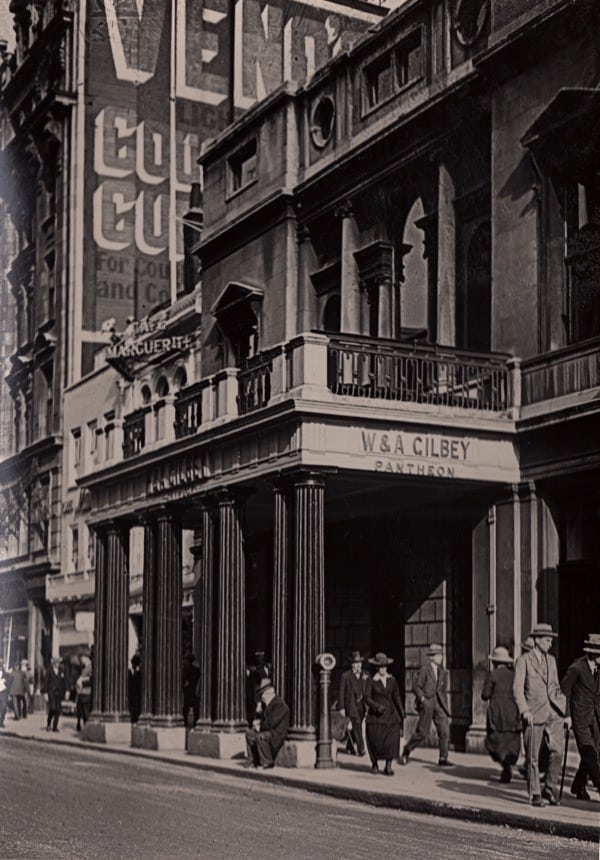
Heading in the other direction another sign, advertising Veglio & Co’s Cafe, was also recently revealed, this time by the demolition of buildings as part of the work on Crossrail in the area.
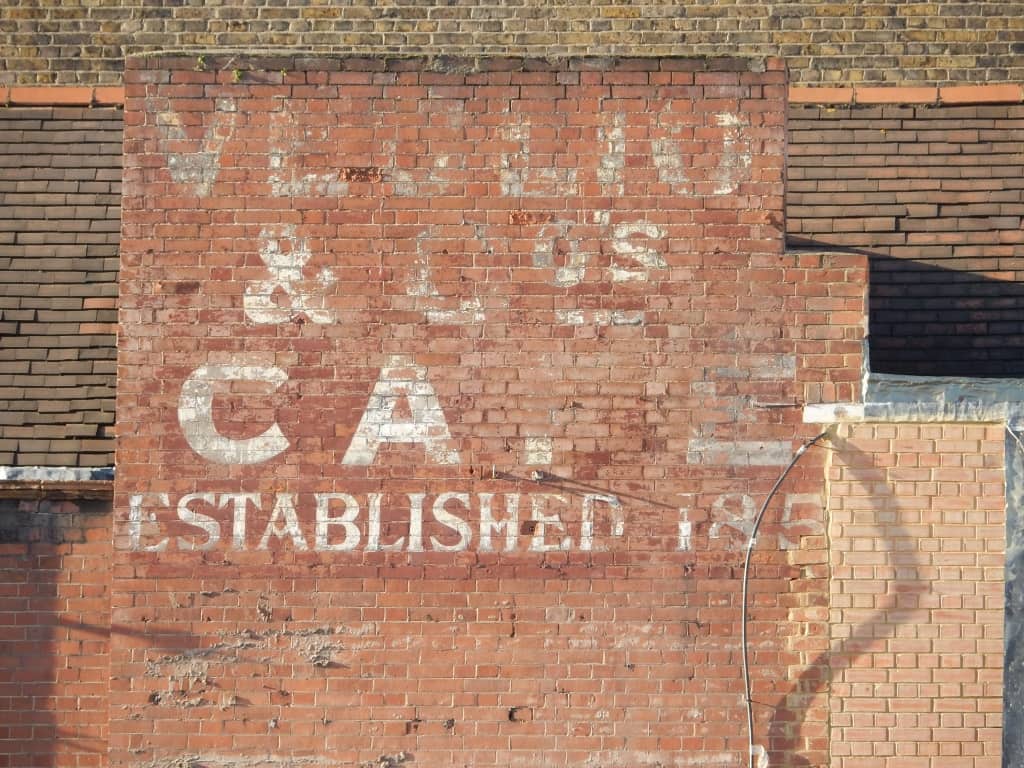
It’s possible to get a sense of how well-positioned this sign once was in this photo taken from New Oxford Street.
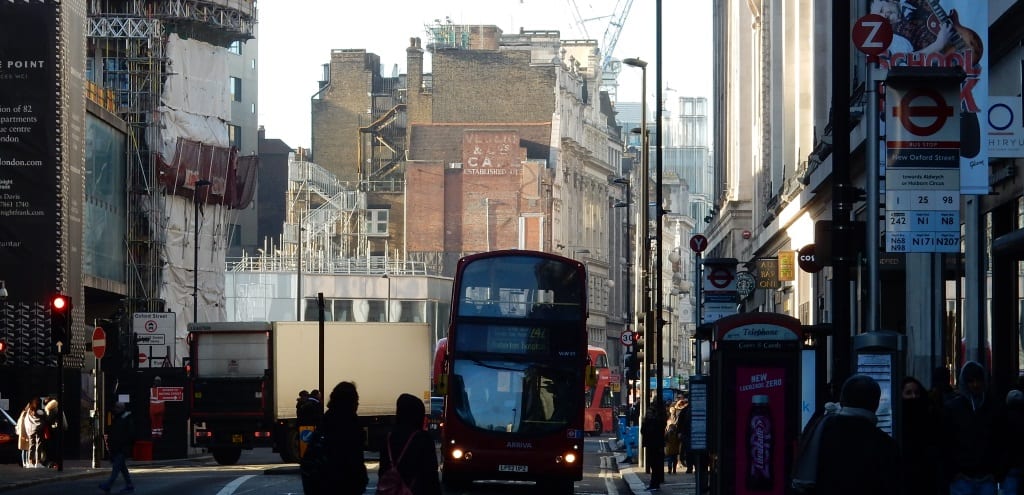
Both of these signs have been revealed due to redevelopment works, but I am often asked questions about the loss of ghost signs, resulting from similar developments elsewhere. Recent examples include the Co-Op sign in Walthamstow, and the fabulous Black Cat Cigarettes advertisement in Finsbury. While these losses are saddening, my general attitude has been that you win some, you lose some, as exemplified by these two reveals on Oxford Street.
I think that this attitude emerged for me due to the relatively unique view I have of ghost signs. I have seen thousands upon thousands of images of signs, and received as many from people around the world that have found me through their efforts to find out more about a particular sign, or just to share their discoveries. This has resulted in some degree of complacency, and a view that because ghost signs are not an ‘endangered species’ we cannot lament the loss of individual signs too much. To some extent I have become desensitised due to the overwhelming number of signs that I have seen, either in person or online.

This position has led to me neglecting, to some extent, the ultra-local nature of many ghost signs, the meaning they have and role they play in communities. It was at a talk to the Clapham Society earlier this year that I revisited the sudden painting over of the Music Roll Exchange sign back in 2007. This completely legal action by the property owner led to a local backlash which concluded with statements from (then) Mayor Ken Livingstone, and the local council. It provided an example of the way that these signs simultaneously straddle private and public ownership i.e. situated on private property, but valued by communities within particular locales. During periods of relative stability/inertia these two senses of ownership are mutually compatible, but they can quickly become a focus of conflict, as happened in this case.
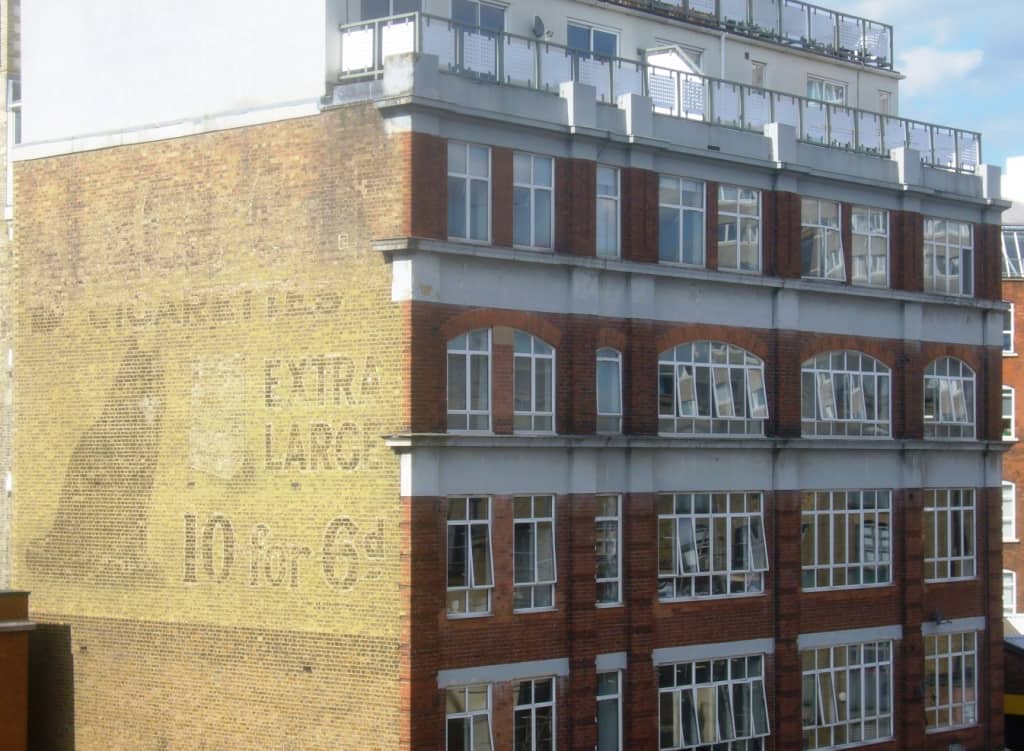
On one of my tours, someone commented that, “if you don’t like change, move to the country”. Implicit in this is that cities are defined by change, and that constant renewal is both necessary and inevitable. However, not all (re)development is to be applauded. For example, in the case of the Black Cat Cigarettes sign, questions must be asked about the development of over-priced ‘apartments’ in the context of a housing affordability crisis in London. Similarly, with the Clapham example, the question would be around the relative aesthetic merits of the ghost sign versus the cream washing, clearly a subjective judgement.
I have often said that conveying the historical value and significance of ghost signs in general, and individual signs in particular, would be one way of encouraging property owners to value them in their own right. Much in the same way that most building owners would consider a Banksy artwork to add value to their property, surely the same attitude could be nurtured towards ghost signs. This is, in some sense, the broad approach that I take in my work, rather than lobbying councils and seeking other pseudo-legal means of protection. That said, the use of local listings does have some merit and would force consideration of the impact of specific planning applications on ghost signs. Some approaches from other countries can be found documented by authors in our book about ghost signs.
Whether any of this holds any sway with these two Oxford Street reveals remains to be seen. To what extent there is a desire within the community there to ‘save’ them is unclear, but I very much doubt even this would be sufficient to hold back the powers that are driving the changes in that area. Enjoy them while they are visible, if indeed they still are – I haven’t passed that way in some time!


